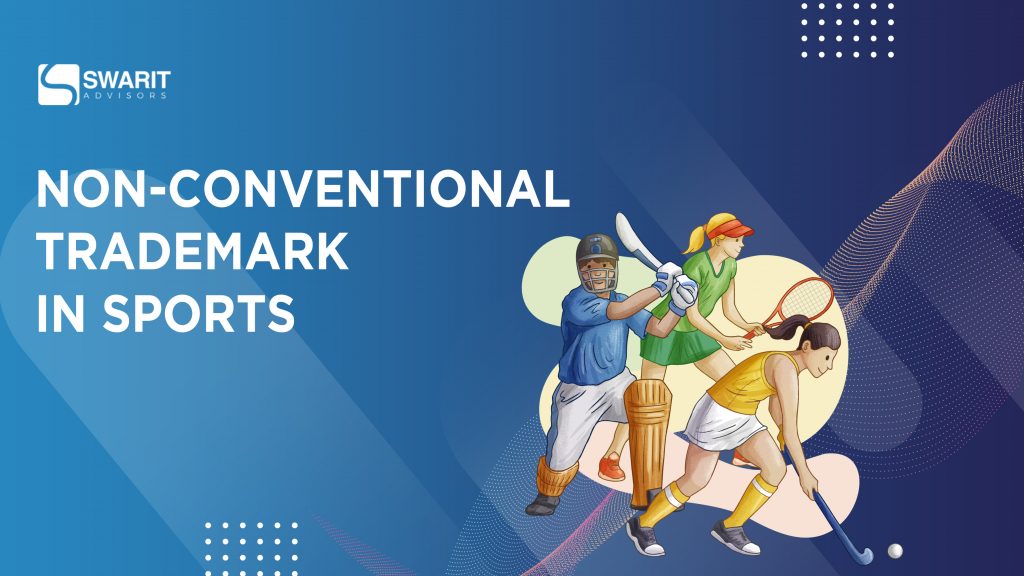Non-conventional Trademark in Sports: An overview

Siddharth Verma | Updated: Dec 01, 2021 | Category: Trademark
Intellectual property law, specifically trademarks, has a long history with sports and sports teams. It is advantageous for a sportsperson to seek trademark protection to generate more cash, particularly for athletes whose careers are likely to be temporary. In sports, merchandising, franchising, and branding all play a significant role as additional revenue sources. In this article, we’ll look at several non-traditional (unconventional) sports trademarks.
Table of Contents
What are Non-conventional Trademarks?
In India, a ‘trademark’ is defined as a mark capable of being displayed visually, one that can distinguish between one person’s goods or services and those of another, according to section 2(ZB) of the Trademark Act 1999. Hence, a trademark is a vital intellectual property that allows customers to identify a product and a firm. In essence, trademarks foster trust, loyalty, and confidence among consumers who feel that a particular trademark will deliver the highest quality goods. Scroll down to check more about the Non-conventional Trademark in sports.
Traditionally, trademarks have been defined as signs, labels, logos, and word/s that differentiate one entity’s product from another. On the other hand, Trademarks are sometimes misconstrued to mean just signs, labels, logos, and slogans. However, it’s somewhat restricted definition in the context of the growing scope and relevance of intellectual property law worldwide. As a result, in addition to standard trademarks, several non-traditional trademarks have been introduced in both developed and developing countries. Furthermore, the Trade-Related Aspects of Intellectual Property Rights (TRIPS[1]) recognizes various types of trademarks. As a result, trademarks can be anything from a color to a fragrance to a sound to a shape to a video. Non-traditional marks are the name given to these types of trademarks. The Non-conventional trademarks that have been successfully registered on a global scale are listed below. These are the following:
- Holograms;
- Shape marks;
- Color marks;
- Smell marks;
- Sound marks;
- Multimedia marks;
- Touch and texture marks;
- Taste marks;
- Gesture marks;
- Holograms; Shape marks; etc
Registration of Non-conventional Trademark in sports
Non-conventional trademark registration is a complicated process. The following are the two most crucial requirements that must be met if you want to register an atypical trademark: Examination of the mark’s uniqueness; and graphical representation of the trademark.
The demand for Non-conventional trademark in sports registration is now relatively low, as graphical representation of such a brand is quite challenging.
Non-Conventional Trademark in Sports
- We will now explore how traditional and unusual trademarks have benefited athletes and various sports clubs. Usain Bolt’s pose mark, “the lightning bolt,” is the most well-known example of a registered unusual trademark in the sports business. Usain Bolt is an olympic sprinter who competes in a variety of events. He is known as “the fastest man on the planet” and has multiple trademarks registered across the world to protect his name, signature, and slogans.
- ‘Vicht’ was the most well-known trademark registration issue of the movement. Niclas Kroon, a tennis player, registered the trademark ‘Vicht,’ a symbol in which she closed her palm in the shape of a duck beak.
- In the case of the scent mark, another important decision was handed down in the United States in 2003, which addressed the problem of trademarking the applicant’s smell mark. While the court did not award registration for the mark, it set forth numerous parameters that would allow for the registration of unusual marks.
Practical difficulties faced by sports industry in context of Non-conventional Trademark
Now, as can be seen from the examples above, the successful registration of unconventional trademarks in sports is sporadic in India. The reasons for this are graphical representation and distinctiveness, both of which are statutory requirements for successfully registering an unconventional trademark.
Graphical Representation
The first and most significant component in registering a distinctive trademark is a pictorial representation, which can also be a significant stumbling block. This can be accomplished by either explaining the movement in great detail or using a visual medium such as a photograph or sketch. Furthermore, while applying, the athlete or team should ensure that the graphical representation’s intelligibility, precision, clarity, durability, accessibility, and objectivity have been taken into account.
Distinctiveness
Distinctiveness/uniqueness is another condition for registering a distinctive trademark successfully. The athlete should ensure that his trademark is distinct and, more critically, that it does not cause public confusion with other items or services in the same trademark classification as the one it intends to cover. Distinctiveness is a term that comes with experience. A short amount of time is insufficient to establish a trademark’s distinctiveness. It can also be used to prove that a mark has acquired distinctiveness in a case of trademark infringement or passing off. Consequently, it has become extremely difficult to register a move, particularly for athletes, because there is no past use of the move/action attributed to the player demonstrating the mark’s distinctness.
Conclusion
We want to conclude here that, Non-conventional Trademark in sports in India is hard to register. The discussion above of Non-conventional trademarks in sports demonstrates that India has far less successful registrations of Non-conventional trademarks in sports than the European Union. Graphic representation of such a mark, distinctiveness/uniqueness concerning the mark, and insufficient instruments to portray the trademark visually are the most significant obstacles to the successful registration of non-traditional trademarks. As a result, it is difficult for the Indian government to catch up with modern marketing strategies that use colors, forms, fragrances, and sound to distinguish their goods.
Read our Article:Dilution Doctrine under Trademark Law: An Overview














